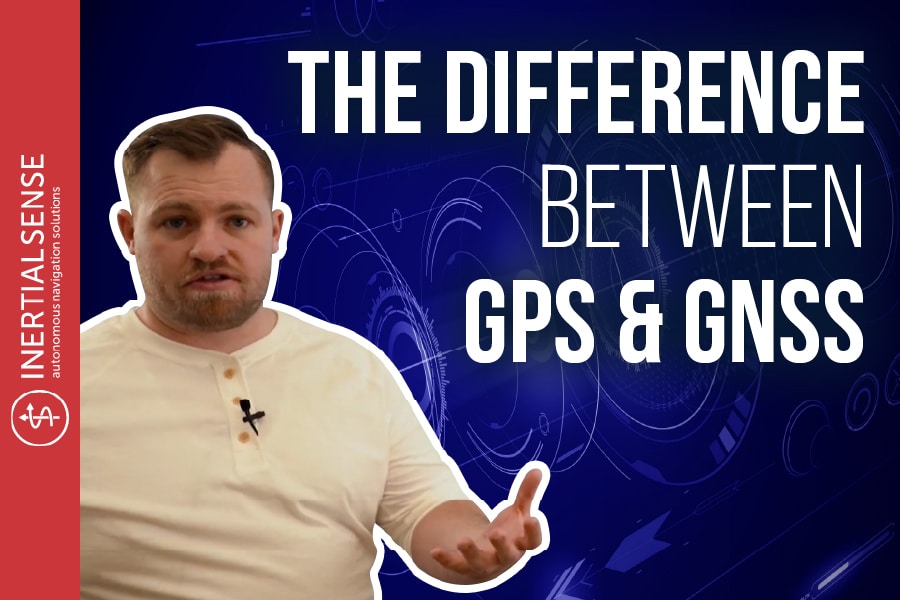
The Difference Between GPS & GNSS
A question as old as time is, what is the difference between GPS and GNSS. Watch this video below as Carson breaks it down.
One of the vital pieces to the Inertial Sense navigation system is GPS, or as we know it across the world, as GNSS.
GPS stands for global positioning system. GNSS stands for global navigation satellite system.
The difference between GPS or GNSS is basic. It is a position that we receive on the earth that comes from a satellite. We send a message up to the satellite, and it comes back down to tell us our location. These satellites revolve around the earth. This satellite particularly, specific to the US or to the Americas, is called GPS.
GNSS is broader because the satellite covers a wider scope. Europe has its own constellations of satellites that are revolving. Australia has its own constellations and satellites that are revolving around the earth. China also has satellites that are revolving around the earth.
The entire network, composed of GPS constellations, including Beidou, Galileo, Glonass, all make up what we call GNSS.
No matter which market you are in, our sensor is going to ping those satellites and be able to tell you exactly where you are. It is a global network of satellites that are working in harmony to give you a position.
If you have any questions about which constellations we support, which ones will work with our sensors, give us a call or visit our website to chat, and we will be more than happy to help you find what is best for you.
Learn More:
Everything You Need To Know About Global Navigation Satellite System Units (GNSS)
What is Multi-Band GPS?
How Does RTK Provide GPS with Centimeter-Level Accuracy?
Video Transcript
One of the vital pieces to the inertial sense navigation system is GPS, or what we know it across the world as GNSS. The difference is very basic. GPS or GNSS, just as a quick explainer, is a position that we receive on the earth that’s coming from a satellite. So we send basically a message up to this satellite, and the satellite comes back down and tells us where we are. These satellites revolve around the earth. This satellite is specific to the US or to the Americas, is called GPS. That’s why we use the term GPS when we, in casual conversation. GNSS is a little bit more broad because over here you have Europe. Europe has their own constellations of satellites that are revolving. Then also Australia has their own constellations and satellites that are revolving around the earth. China also has satellites that are revolving around the earth. These satellites are the same thing, they provide a position. This entire network put together between GPS constellations, Beidou, Galileo, Glonass, all of these constellations make up what we call GNSS. GPS is a term very specific to the US market. Global positioning system, that’s as we know it. The network as a whole, all the constellations put together into one is called GNSS, global navigation satellite system. So no matter which market you’re in, our sensor is going to ping those satellites and it’s going to be able to tell you exactly where you are, no matter where in the world that location may be. It is a global network of satellites that are working in harmony to give you a position, in relative to the earth. If you have any questions about which constellations we support, which ones will work with our sensors, which ones are compatible, what signals can we receive, if you have any questions, click the link below, give me a call, hop on the website and chat, let’s talk about it.

